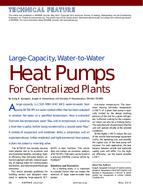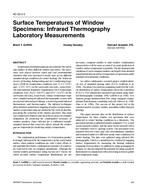If an intervention aims to reduce indoor humidity, how can the pre-intervention humidity be compared to the post-interventionhumidity if these measurements are taken at different times under different outdoor conditions? For a set of houses, how can theirinterior humidities be compared if they are measured with different outdoor weather conditions? The approach discussed in thispaper is the moisture balance approach, described and presented previously (Rose and Francisco 2004, 2010).This approach was applied to homes in a weatherization and ventilation study in the U.S. Midwest. The results seem to showthat weatherization provided a statistically significant lowering of indoor humidity and that there was a difference between thecontrol and treatment groups. However, on close review, a bias was noted when measurements were taken during mild weather,with outdoor temperatures between 10°C and 15°C. Data with outdoor temperatures greater than 15°C were excluded from this data review.This paper explores the basis for the findings. It identifies alternative regression methods besides the method previouslyapplied. It investigates the possible error with measurement periods of 1-week, 2-week, and 1-month measurement intervals. Itcloses with cautionary recommendations regarding methods for characterizing wetness with outdoor temperature corrections.
Citation: Thermal Performance of Exterior Envelopes of Whole Buildings XIII, Conference Papers
Product Details
- Published:
- 2016
- Number of Pages:
- 8
- Units of Measure:
- Dual
- File Size:
- 1 file , 3.1 MB
- Product Code(s):
- D-BldgConf16-35


